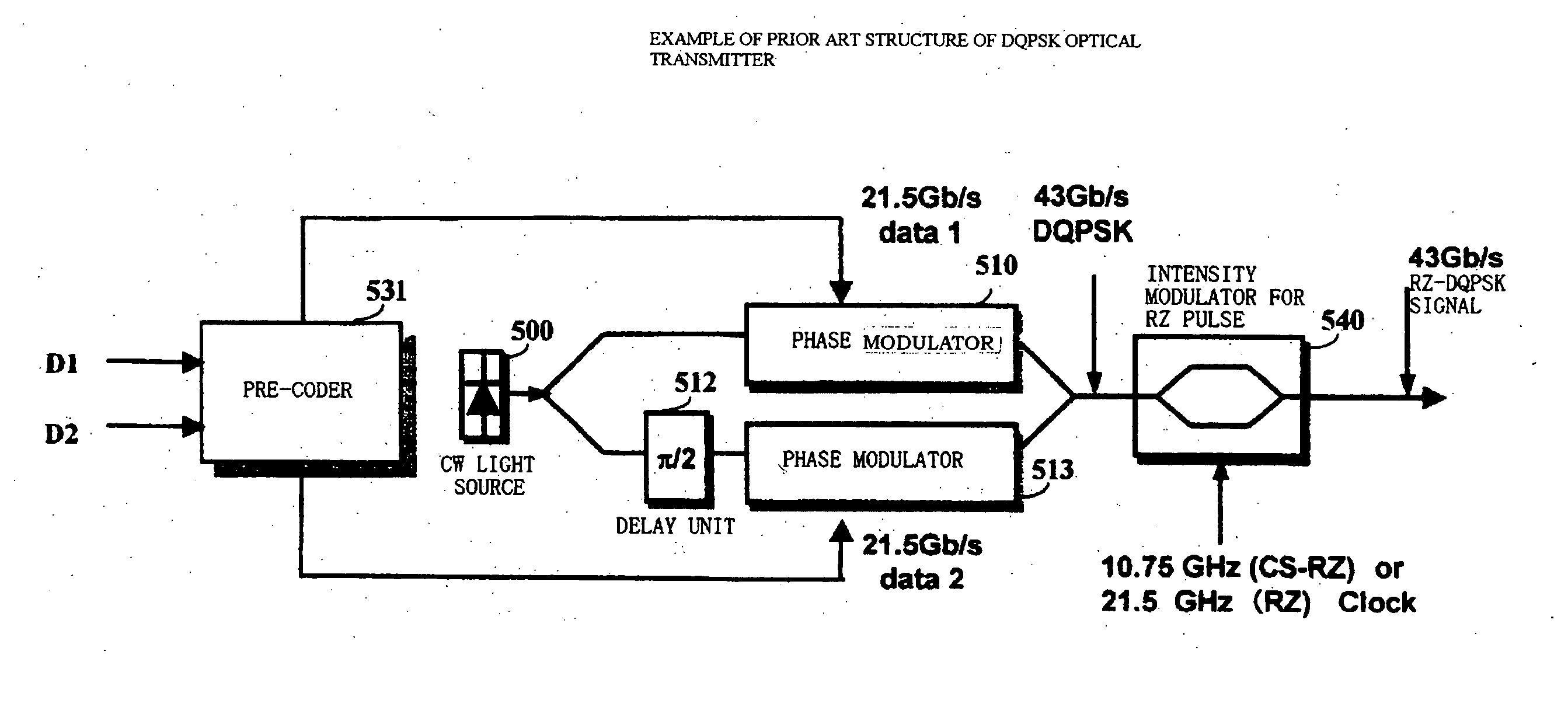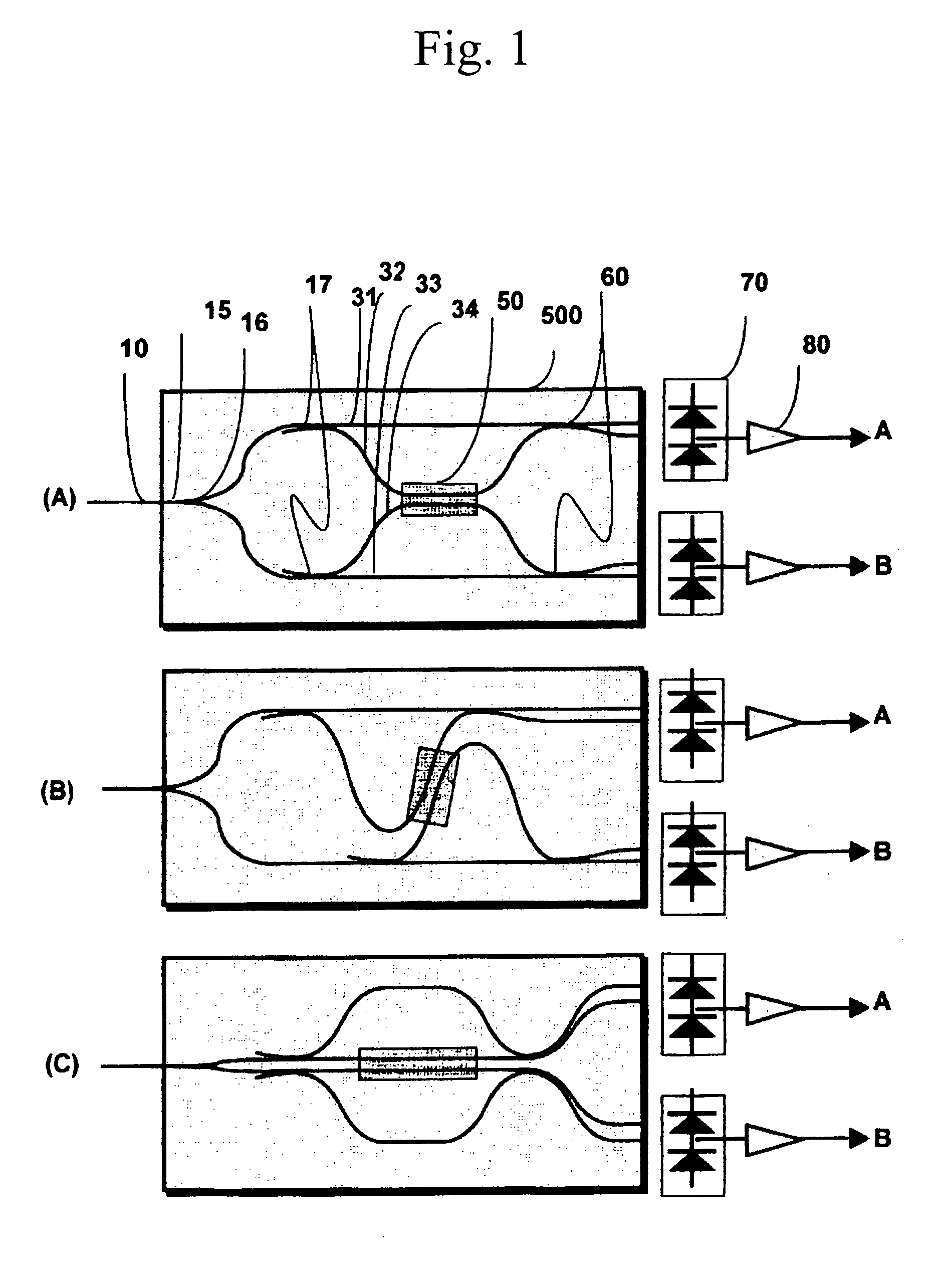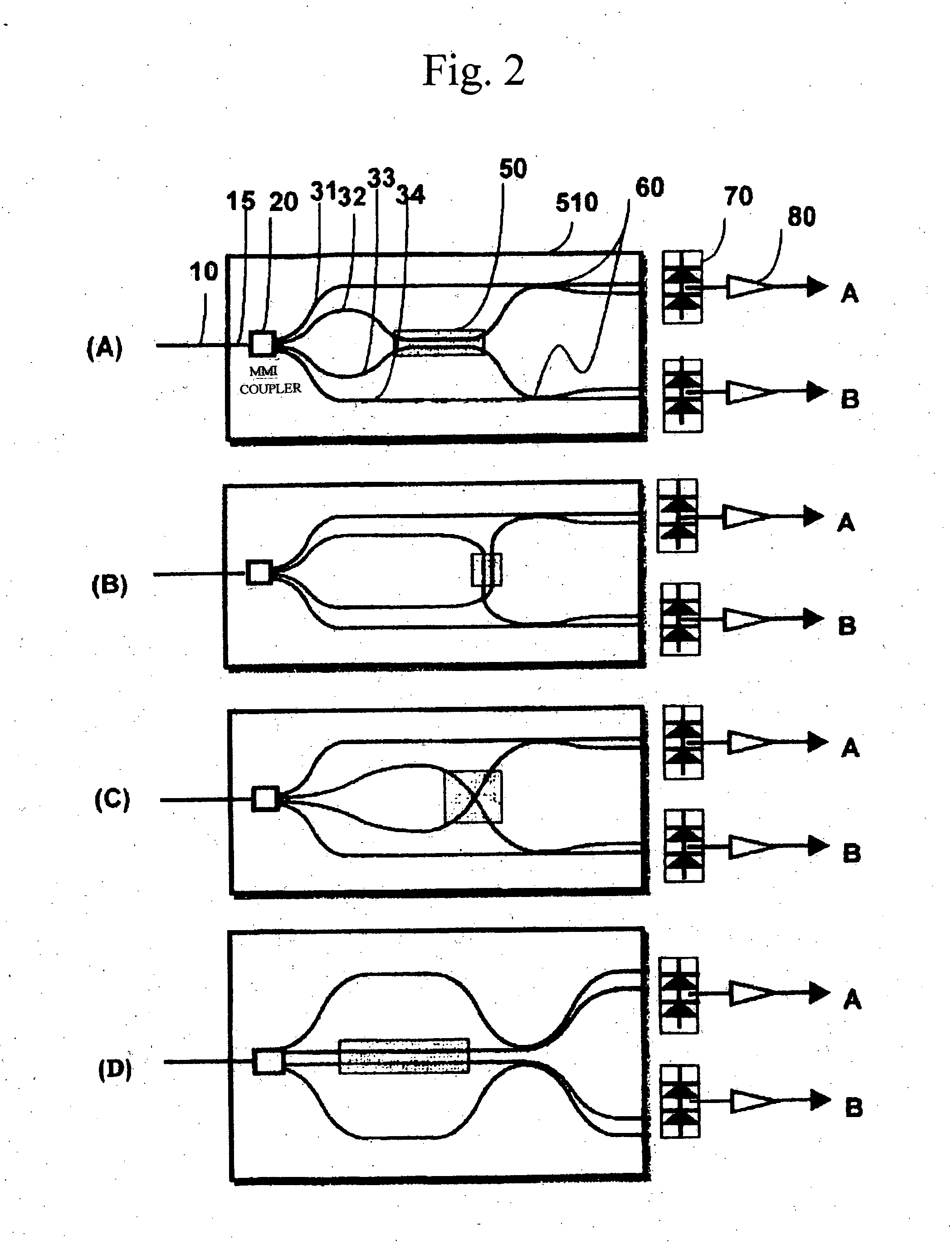Optical receiver and optical receiving method corresponding to differential M-phase shift keying system
a technology of optical receiver and optical receiving method, which is applied in the direction of optical elements, instruments, digital transmission, etc., can solve the problems of large optical receiver size, inability to avoid enlargement of optical receiver, and the need for high-quality optical phase control technology between delay interferometers, etc., and achieves low cost and small size
- Summary
- Abstract
- Description
- Claims
- Application Information
AI Technical Summary
Benefits of technology
Problems solved by technology
Method used
Image
Examples
first embodiment
[0041] [First Embodiment]
[0042]FIG. 1(A) is a block diagram illustrating a basic structure of an optical receiver as a first embodiment of the present invention. First, the basic structure will be explained with inclusion of each principal portion. In this Figure, the reference numeral 500 is a silica substrate or indium phosphide substrate. The delay interferometers for two systems are integrated on one planar lightwave circuit (PLC) for reduction in size. Numeral 10 denotes a single mode fiber; 15, an optical waveguide; 16, 17, light branching units formed of a light directional coupler for almost equally branching the input DQPSK signal into two signal lights; 31 to 34, optical waveguides where the four signal lights having almost equal power are branched with the light branching units 16, 17 to the optical waveguides 31 to 34; 50, a light path length varying unit which is formed, for example, of a thin film heater for varying temperature in regard to the equal length of a part o...
second embodiment
[0087] [Second Embodiment]
[0088]FIG. 1(B) illustrates a modification example of the optical receiver as the first embodiment (FIG. 1A) of the present invention. This embodiment is different from the first embodiment in the point that the optical waveguides 31 and 32 in the first embodiment are arranged asymmetrically on the substrate and the light path length varying unit 50 is arranged diagonally to the fiber 10.
[0089] Namely, two optical waveguides are arranged asymmetrically and the heater can be arranged diagonally. Particularly, this arrangement is useful when there are limitations on the mounting method and influence of temperature.
third embodiment
[0090] [Third Embodiment]
[0091]FIG. 1(C) illustrates a modification example of the optical receiver as the first embodiment (FIG. 1A) of the present invention. In the first and second embodiments, the light path length varying unit for phase adjustment has been provided to the relative delay optical waveguides 32, 33 corresponding to a symbol. However, this embodiment is different in the point that the light path length varying unit 50 is arranged to the other optical waveguides 31, 34. With this arrangement, the thin film heater, for example, can be arranged in the longer length. Particularly, this structure is useful when sufficient reduction in size is realized and thereby the operating points of the two delay interferometers cannot easily provide the light path difference of +π / 4 and −π / 4 as the relative phase difference explained above through the control of the light path length varying unit 50.
PUM
| Property | Measurement | Unit |
|---|---|---|
| delay time | aaaaa | aaaaa |
| shift angle | aaaaa | aaaaa |
| time | aaaaa | aaaaa |
Abstract
Description
Claims
Application Information
 Login to View More
Login to View More - R&D
- Intellectual Property
- Life Sciences
- Materials
- Tech Scout
- Unparalleled Data Quality
- Higher Quality Content
- 60% Fewer Hallucinations
Browse by: Latest US Patents, China's latest patents, Technical Efficacy Thesaurus, Application Domain, Technology Topic, Popular Technical Reports.
© 2025 PatSnap. All rights reserved.Legal|Privacy policy|Modern Slavery Act Transparency Statement|Sitemap|About US| Contact US: help@patsnap.com



